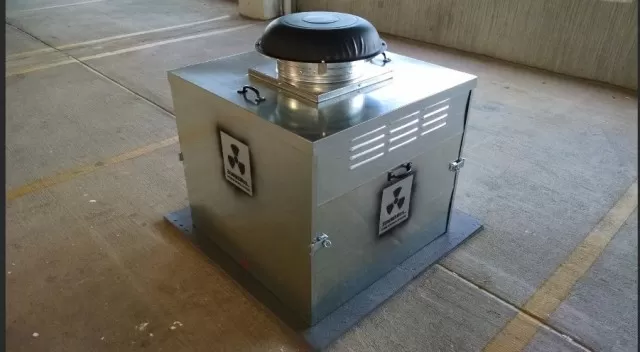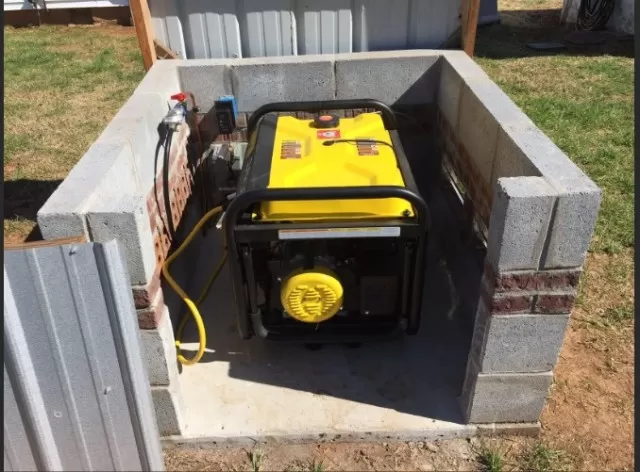Avoid These Home Generator Blunders. In the grand symphony of maintaining and utilizing a home generator, the significance of methodical precision cannot be overstated.
It is through the deliberate pursuit of correct procedures that the foundation for a sustained, trustworthy, and unwavering power supply is firmly established. The intersection of safety, reliability, and consistency converges at the crossroads of these meticulously crafted steps, paving the way for an enduring and harmonious partnership between generator and homeowner.
By meticulously following the prescribed guidelines for home generator deployment and care, you embark on a journey towards a future marked by an unwavering power source. The prudent orchestration of these steps serves as a bulwark against potential hazards, ensuring the safety of your household and the seamless operation of vital electrical systems. Moreover, the conscientious adherence to maintenance routines elevates the generator’s reliability, guaranteeing that it stands ready to answer the call whenever the need for power arises.
Ensuring Consistent and Reliable Power: The Vital Role of Proper Maintenance

In the wake of enduring an extended power outage within one’s residence, the significance of guaranteeing unwavering and dependable electrical power emerges as a paramount concern.
Particularly for inhabitants of regions prone to frequent bouts of severe weather and turbulent conditions, being among the nearly one-fifth of single-family households in the United States equipped with a home generator becomes a strategic choice.
The pivotal linchpin in this scenario remains the meticulous upkeep of the generator, a practice that stands as the cornerstone of confidence in its flawless functionality during future power disruptions.
However, the realm of home generators starkly contrasts with a laissez-faire approach, as casual experimentation is not a tenable route. The knowledge and skills required to adequately preserve and operate a generator cannot be garnered through impromptu efforts, for the stakes are too high—mishaps can lead to irreparable harm to the machinery or, worse, compromise one’s personal safety.
.
Without adhering to a methodical and deliberate methodology, the consequences may manifest in a series of all-too-common blunders related to the operation and Maintenance of the apparatus.
To effectively ensure the well-being and circumvent a potential power crisis shrouded in darkness, peruse the following insights.
These guidelines serve as a compass to maintain a home generator at a constant state of preparedness, standing ready to serve whenever the call for power arises.
Selecting an Inappropriate Extension Cord: A Potential Hazard
Among the array of potential mistakes in maintaining and operating a home generator, the choice of extension cord stands out as a critical aspect deserving keen attention.
Most generators, in order to function optimally and safely, necessitate the use of an outdoor grounded extension cord endowed with Ground Fault Circuit Interrupter (GFCI) functionality, boasting a gauge no less than 14. This seemingly small detail holds immense significance, for neglecting it could usher in a realm of perilous consequences, including the imminent threat of fire outbreak or the dire risk of electrocution.
A cautionary word is in order regarding the longevity of extension cords.
Those cords that have weathered the passage of time might not only be unsuitable but, more alarmingly, unsafe for the task at hand. Moreover, one must factor in the interplay between the cord’s length and the amperage of the load it is meant to bear.
This dynamic duo can dictate the cord’s threshold, determining the extent to which it can effectively manage the electrical load without succumbing to potential hazards.
A golden nugget of wisdom to keep at the forefront of your mind: the user manual is your unwavering ally.
When in doubt, always turn to this definitive source of guidance to ensure you are utilizing the appropriate extension cord that aligns with your generator’s specifications. By adhering to this cardinal rule, you pave the way for a harmonious and secure operation of your generator, sidestepping the pitfalls of blown fuses, electrocution, or the ominous specter of a fire hazard.
Risk of Running the Generator Indoors: A Lethal Menace

One of the gravest errors that can be committed while handling a generator involves its operation within enclosed spaces.
Embarking on the ill-fated journey of igniting a generator from within the confines of a garage or in close proximity to the dwelling itself is unequivocally discouraged, and for good reason. The exhaust emanating from the generator carries an insidious threat in the form of carbon monoxide, a silent but deadly poison that can swiftly infiltrate the air.
In the quest for an optimal locale to deploy your generator, the resounding directive is to situate it outdoors, within a dry and well-ventilated area.
This outdoor haven serves a dual purpose—shielding the machine from the perils of moisture infiltration while also facilitating the rapid dispersal of any potentially hazardous emissions. When selecting the ideal location, it is imperative to maintain a significant distance from open doors and windows, with a recommended safe threshold of at least 25 feet.
However, it doesn’t stop there. A margin of safety is extended to the generator itself, necessitating a generous expanse of at least 5 feet of clearance around its entirety.
For those reliant on portable generators, a word of caution reverberates: never flirt with fate by attempting to initiate its operation within the confines of a garage, regardless of convenience or urgency.
Similarly, for stationary generators, the path to secure operation involves the intervention of professionals. The installation process demands a meticulous approach, warranting the expertise of trained individuals to position the stationary generator in an appropriate and secure location.
By meticulously adhering to these steadfast guidelines, you erect a formidable barrier against the perilous consequences of carbon monoxide exposure, ensuring the safety and well-being of all within your abode.
Opting for Subpar Fuel: A Costly Gamble
The allure of cutting corners and conserving a handful of dollars by opting for budget-friendly fuel instead of premium may seem tempting at first glance.
However, this seemingly innocuous decision can swiftly transform into a perilous misstep, ultimately inflicting severe harm upon the very heart of your generator and, paradoxically, culminating in a significantly heftier financial toll over time. The repercussions of such a choice can cascade into a litany of issues that reverberate through the unit’s inner workings, unraveling its performance and Durability.
Foremost among these ramifications is the ominous specter of clogged injectors—a grave consequence borne from the utilization of substandard gasoline.
This lamentable outcome not only hampers the generator’s smooth operation but also acts as an inadvertent catalyst for the propagation of microorganisms within the fuel system. This unwelcome microbial growth, a direct byproduct of inferior fuel, can wreak havoc, exacerbating the deterioration of the generator’s functionality and diminishing its overall output.
Moreover, consider the predicament that arises when a generator sits dormant for an extended period.
The passage of time can usher in the deterioration of the fuel, rendering it ineffective and potentially detrimental to the generator’s health. To preempt this scenario, a trifecta of precautionary measures presents itself.
Regular operation of the generator serves as a potent elixir to ward off the perils of stagnation. In cases where a stored generator is set to be utilized, the judicious practice of draining the existing fuel reservoir is a sage strategy.
Alternatively, introducing a fuel stabilizer emerges as a beacon of preservation, imbuing the fuel with the longevity and vitality necessary to avert the grip of decay.
In the labyrinthine realm of generator maintenance, the axiom resounds: the fuel you choose to feed your generator reverberates far beyond the present moment, influencing its longevity and performance.
By opting for quality over thriftiness and embracing the tenets of proper fuel management, you bestow upon your generator the gift of a prolonged and robust existence, sparing yourself the anguish of costly repairs and compromised output.
Mastering the Art of Proper Generator Activation and Deactivation

Navigating the realm of generator operation demands a meticulous choreography to ensure both efficacy and safety.
The orchestration of powering on and off a generator follows a prescribed set of steps, a dance of connectivity and disconnection that, when executed accurately, safeguards the generator’s well-being while guaranteeing a seamless flow of power. A slight misstep in this intricate routine can tip the balance towards potential damage or undue strain on the unit.
Embarking on the journey of generator activation commences with a strategic arrangement.
Before initiating the generator, the initial act involves plugging in the extension cords, thereby establishing the conduits through which power shall course. Subsequently, the addition of loads—devices and equipment in need of power—into these extension cords contributes to the intricate web of energy distribution.
The art of generator deactivation unfolds in reverse, a calculated sequence that mirrors the process of activation in reverse order.
The first step entails disconnecting the loads from the extension cords, extricating them from the web of power. This is swiftly followed by the detachment of the extension cords from the generator itself, culminating in the complete severance of power pathways.
At this juncture, with all cords dutifully unplugged, the final act beckons—the deactivation of the generator.
The generator, having fulfilled its duty, is gently ushered into a state of repose, ready to be summoned to action when next required.
Yet, in the pursuit of this rhythmic ballet, a beacon of guidance shines forth—the user manual.
This manual, akin to a compass, serves as an unwavering source of direction, elucidating the nuanced nuances of generator operation. By heeding its counsel, you erect an impregnable bastion of security, ensuring that the generator’s ignition and cessation are executed with the precision of a maestro, sparing the unit from undue stress and safeguarding it against the specter of potential damage.
In the grand tapestry of generator stewardship, the act of powering on and off becomes an embodiment of care, an art form that, when practiced meticulously, orchestrates a harmonious interplay between man and machine, all while fostering the longevity and resilience of the generator itself.
*The information is for reference only.